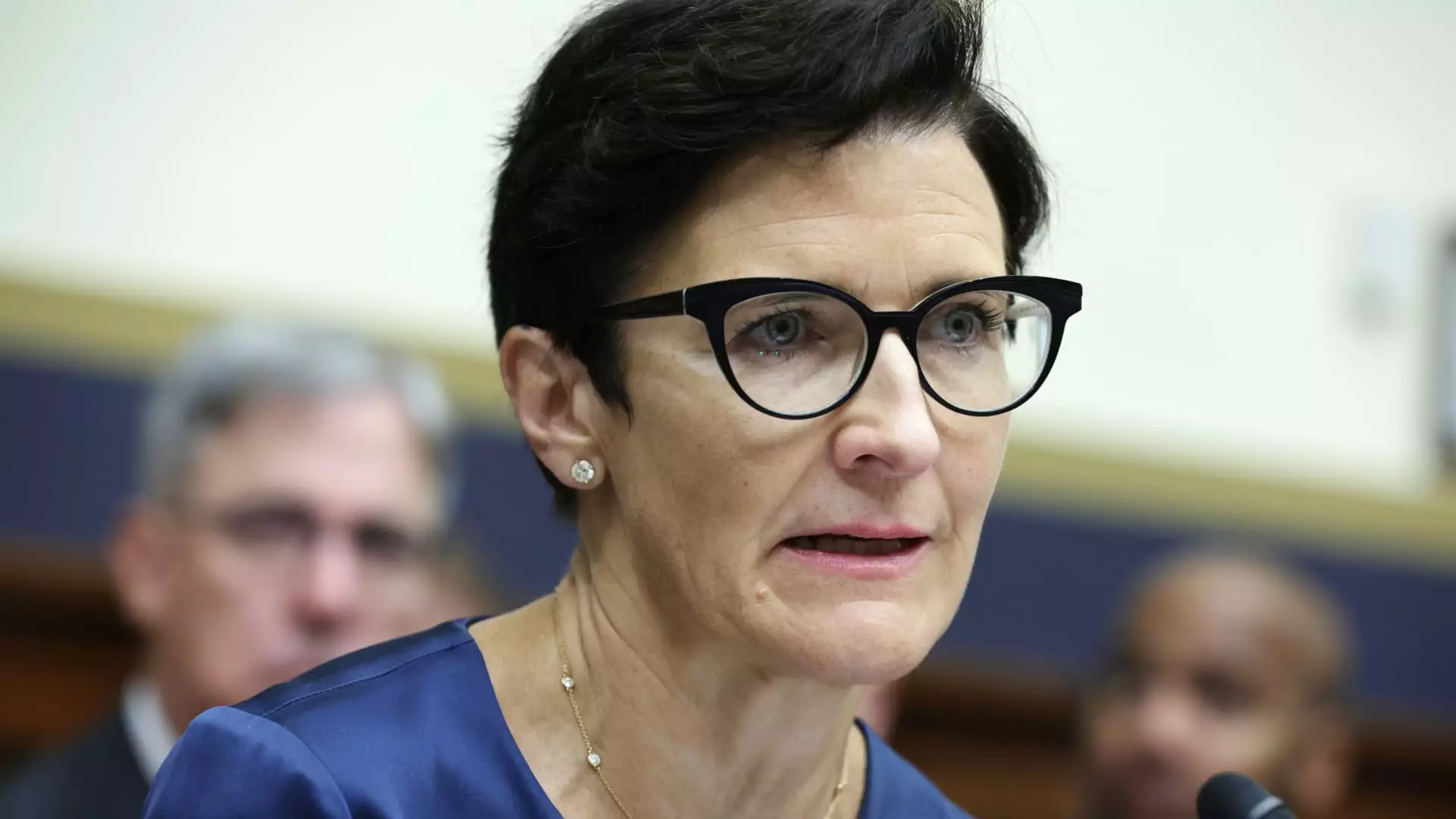When Citigroup CEO Jane Fraser announced her plans for a comprehensive corporate overhaul, it sent shockwaves through the bank’s workforce. With talks of job cuts and an uncertain future, employees are understandably concerned about their livelihoods. Fraser has inherited a challenging task: fixing a global bank that has struggled to stay afloat for years. Citigroup’s performance metrics have lagged behind its competitors, leading to a significant decline in stock value. The pressure is mounting for Fraser to turn the tide and bring about substantial changes that will drive growth and improve the bank’s financial standing.
To address the underlying issues plaguing Citigroup, industry experts believe that a substantial reduction in headcount is necessary. Analysts argue that this is the only way for Fraser to make a considerable impact and set the bank on a path to recovery. The talks within the organization suggest potential job cuts of at least 10% across several major business units. However, these figures are subject to change as the reorganization progresses. Unfortunately, for Citigroup employees, this means that the layoffs could be more significant and more painful than initially expected.
If Fraser decides to part ways with 10% or more of the workforce, it would result in one of the deepest rounds of dismissals on Wall Street in recent years. However, given the regulatory demands faced by Citigroup, which forced the retirement of Fraser’s predecessor, Mike Corbat, the bank’s expenses and headcount have continued to rise. While other banks have been actively reducing their workforce, Citigroup has maintained a staff of 240,000, making it one of the largest American banks by headcount. This sizeable workforce presents a significant challenge as Fraser seeks to streamline operations and improve efficiency.
Fraser is expected to reveal more details about her plan and its financial implications during the fourth-quarter earnings announcement in January. The stakes are high for Citigroup as the bank aims to revitalize its stock performance and meet the expectations of investors. Fraser’s goal is to achieve returns of at least 11% in the coming years, a critical target that will directly impact the bank’s stock recovery. To accomplish this, Citigroup needs to focus on increasing revenue, optimizing its balance sheet, and cutting costs. However, with the slowing U.S. economy, revenue growth may prove challenging, making expense cuts the primary lever to pull.
To drive the corporate reorganization, Fraser has appointed Titi Cole, Citigroup’s head of legacy franchises, as the person in charge. Cole’s experience at Wells Fargo and Bank of America, where she dealt with similar expense and headcount challenges, makes her well-suited for this role. Additionally, Boston Consulting Group has played a significant part in mapping out the bank’s organizational structure, monitoring key performance metrics, and providing recommendations for improvement. Despite the elegance of the code name “Project Bora Bora,” employees have experienced heightened anxiety since the September announcement, uncertain about their own and their managers’ fate.
The Path Ahead
While the exact number of layoffs is yet to be determined, progress towards a leaner organization will continue in the coming weeks. Executives are expected to experience cuts beyond the initial 10%, primarily due to Fraser’s push to eliminate redundancies and streamline reporting structures. Additionally, operations staff supporting businesses divested or reorganized are also at higher risk of job loss. However, even if Fraser announces a significant reduction in the workforce, investors will likely seek evidence of long-term expense reduction to regain confidence in Citigroup’s ability to control costs.
Ultimately, the success of the corporate overhaul hinges on Fraser’s leadership and ability to execute a comprehensive plan. Dealing with the challenges of trimming costs while also improving client service and organizational efficiency is no small feat. Moreover, failure to achieve the targeted returns could lead to renewed calls for more drastic actions, such as breaking up the company. Fraser’s commitment to achieving tangible results will be closely monitored by analysts, investors, and stakeholders to determine the fate of Citigroup.
Citigroup is at a critical juncture, and Jane Fraser faces enormous challenges in steering the bank towards growth and profitability. The necessity of headcount reduction, coupled with the need for revenue growth and expense cuts, underscores the difficult decisions awaiting Fraser and her team. Only time will tell whether Citigroup can successfully navigate these obstacles and emerge as a stronger, more agile bank in the competitive landscape of the financial industry.


Leave a Reply